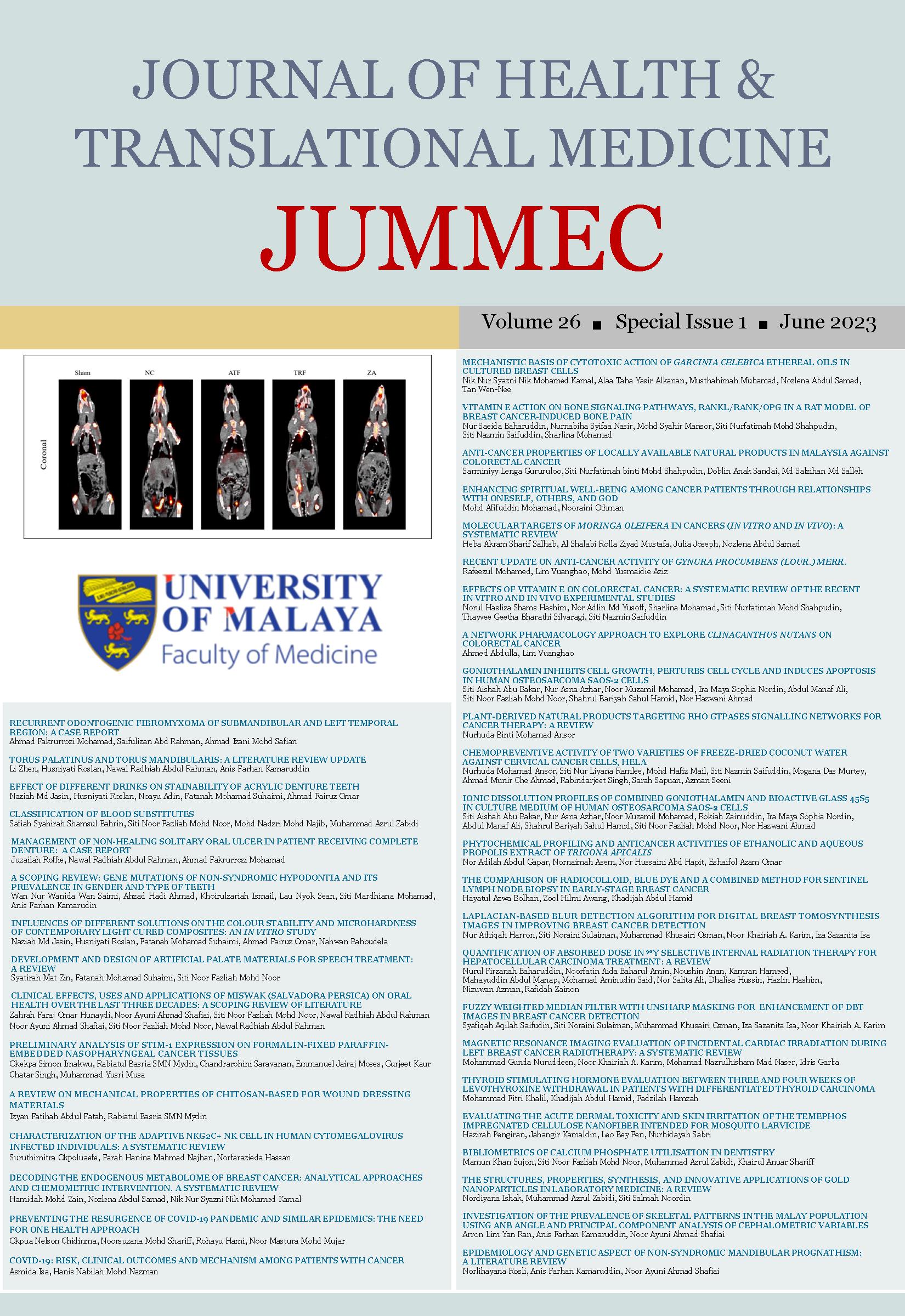TORUS PALATINUS AND TORUS MANDIBULARIS: A LITERATURE REVIEW UPDATE
Received 2022-12-01; Accepted 2023-03-18; Published 2023-06-06
DOI:
https://doi.org/10.22452/jummec.sp2023no1.26Abstract
Torus palatinus and torus mandibularis are common localised bony overgrowths of cortical bone, which are non-pathological. As tori have been widely discovered for ages, there are some new findings in the 21st century. This review aims to summarise the aspect of aetiology, sociodemographic features, clinical features, treatments and functions of tori. A search was performed in PubMed and Google Scholar databases from 1950 until 2022. From the total of 4,150 studies evaluated, 61 articles were included in this review. The aetiology of tori has shown that Y chromosomes and some signal factors (Notch3, SMAD9, LRP5 V171) may affect its occurrence. The prevalence among people of East Asian is higher than among West African heritage, and the age range is 20-50 years old. Clinical features of tori are represented by size, shape and location, and sometimes by symptoms. Patients who need the removal of tori are treated by surgical removal using burs/bone chisel and mallet/peeling it with Er:YAG laser/piezoelectric surgery, plus postoperative anti-inflammatory drugs, which give a good healing effect. In addition, tori can be used as an autogenous bone graft to repair periodontitis bone defects in maxillary sinus lift cases and to increase bone thickness for dental implants. Tori can also be a marker for hyperparathyroidism and bioarcheological investigation. In conclusion, updates on these aspects have been found. However, complex aetiology needs to be further confirmed. Moreover, treatment is worth tracking, and its function as autologous bone deserves to be studied in other body parts.
Downloads
Downloads
Published
Issue
Section
License
All authors agree that the article, if editorially accepted for publication, shall be licensed under the Creative Commons Attribution License 4.0 to allow others to freely access, copy and use research provided the author is correctly attributed, unless otherwise stated. All articles are available online without charge or other barriers to access. However, anyone wishing to reproduce large quantities of an article (250+) should inform the publisher. Any opinion expressed in the articles are those of the authors and do not reflect that of the University of Malaya, 50603 Kuala Lumpur, Malaysia.


